|
Current coral reef research projects on the Big Island
Last updated March 7, 2000
- Aquarium reef fish collecting impact study
- West Hawai'i Aquarium
Project
- Reef monitoring at Kapoho
- Succession of corals on lava flows in Puna
- Pelekane Bay biological assessment
- Kona sport diver impact study
- Kona mooring pin study
- Kawaihae coral transplant study
- Sea Turtle Research Program
Do you know of any ongoing research that is not on this list? Please let me know at Tissot@hawaii.edu. Mahalo!
(1) Aquarium reef fish collecting impact study
| Principal investigators: Dr. Leon Hallacher
& Dr. Brian Tissot, UH Hilo; Dr. Bob Nishimoto,
DAR, Dept. of Land and Natural Resources,
Hilo. Research associates: Brent Carmen, DAR, Dept. of Land and Natural
Resources, Hilo; Brent Larsen, Robert Ames, UH Hilo
Sponsor: DAR, Dept. of Land and Natural Resources. |
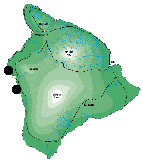 |
| The study is designed to assess the impact of reef fish collecting along
the Kona coast. Target fish species are counted in areas that collectors harvest fish
(near Honokohau Harbor and North Red Hill) and in areas were collecting is prohibited (Old
Kona Airport and Red Hill). Comparisons through time should measure any changes due to
fish collecting. Surveys are conducted monthly. Status: 1996-1998
 Impacts
of Aquarium Collectors Final Report Impacts
of Aquarium Collectors Final Report  |
(2) West Hawai'i Aquarium
Project: Fishery Management of Marine Protected Areas
| Principal investigators: Dr. Brian
Tissot, Washington State University Vancouver, Dr.
Leon Hallacher, UH Hilo; Dr. Bill Walsh,
Division of Aquatic Resources, DLNR, Kona. Collaborators: Bob Nishimoto, Pete
Hendricks, Brent Carmen, Division of Aquatic Resources, DLNR; Sara Peck, Univ. Hawai'i Sea
Grant Extension Service.
Research associates: Jonathan Hultquist, Washington State University, Vancouver;
Steve Cotton, Anne Creason, Greg Polloi, Linda Prescit, Dan VanRanvensway UH Hilo.
Sponsor: Hawai'i Coral Reef Initiative Research Program |
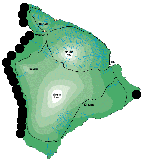 |
| The study is designed to provide an assessment of the effectiveness of the
West Hawaii Regional Fishery Management Area as mandated by Act 306. One of the major
components of the Act is to establish a minimum of 30% of the Kona coastline as Fish
Replenishment Areas where aquarium fish collecting is prohibited. In addition to providing
an ongoing assessment of the impact of aquarium reef fish collecting along the Kona coast,
this study will examine the effectiveness of marine protected areas as a fishery
management tool.. Surveys are conducted bi-monthly. See the WHAP
website for
more information. Status: ongoing since March 1999 |
| Principal investigators: Dr. Leon
Hallacher, UH Hilo& Dr. Brian Tissot,
Washington State Univ. Research associates: undergraduate students at
the UH Hilo (Summer Session)
Sponsor: Kalakaua Marine Education Center |
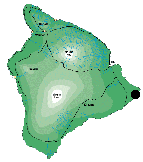 |
| This research has been conducted jointly with students enrolled in the
University of Hawai'i at Hilo's Tropical Marine Research course annually during summer
session since 1992. Coral bleaching is a phenomena whereby corals lose their mutalistic
microscopic plants and hence their color becomes white. Bleaching is believed to be a
response to both natural and anthropogenetic stress and is of global concern due to its
link with global warming and destruction of stratospheric ozone. We have been monitoring
the abundance and extent of bleaching in all major species of coral at Kapoho. In recent
years we have begun to measure declines in coral abundance although it is not clearly
associated with bleaching. Because we now have four years of research the work will soon
be written up for publication in a professional journal. Status: ongoing
since 1992 |
| Principal investigators: Michael Childers and Dr. Brian Tissot, UH Hilo Sponsor: Kalakaua
Marine Education Center |
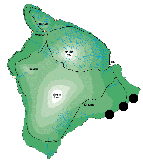 |
| This is a project which is examining the development and succession of
corals by surveying reefs on submerged lava flows of different ages in Puna. The
importance of the project is to establish a relationship between the development of coral
reefs and economically important marine resources. One problem contributing to the
worldwide destruction of reefs is a poor understanding of their contribution to marine
fisheries. The project is in its preliminary stages and more surveys are planned this year
with marine science students. I recently gave a talk on this research at a national
meeting. Additional research will be disseminated through talks at scientific and public
meetings and publications in professional journals. Status: initial
project finished 1994 |
| Principal investigator: Dr. Brian Tissot,
UH Hilo Research associates: Brett Martin, Windy Gibson and Kent Backman, UH Hilo
Sponsor: U.S. Fish and Wildlife Service |
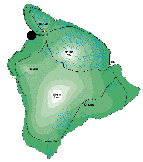 |
| Pelekane Bay has served as both a historical and cultural center for
native Hawai’ians, in addition to serving as an valuable nursery area for
commercially and recreationally important marine resources. In the last several decades
this area has been subjected to considerable anthropogenetic disturbance due to the
construction of the Kawaihae boat harbor and changes in the drainage patterns of the
12,000 acre watershed mauka of the Bay. The marine flora and fauna of Pelekane Bay was
surveyed for the National Park Service in 1976. The goal of this project will be to
resurvey the area to assess any long term changes in the marine biota and habitat of the
area with the ultimate goal of providing guidelines for restoration of the Bay to enhance
nearshore fisheries. This work will be published in a professional journal. Status:
project finished 1995-97
 20 years of change at Pelekane Bay 20 years of change at Pelekane Bay
 |
| Principal investigators: Dr. Brian Tissot
& Dr. Leon Hallacher, UH Hilo; Dr. Bob Nishimoto, DAR, Dept. of Land and Natural Resources,
Hilo. Research associates: Marian Westley, UH Manoa; Brent Larsen, Robert Ames,
UH Hilo
Sponsor: Dept. of Land and Natural Resources, Main Hawaiian Islands Marine
Resource Investigations project. |
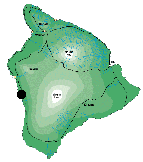 |
| The study is designed to provide baseline information on coral cover and
health on selected west Hawaii reefs that are subject to heavy
non-consumptive scuba diving
vs reefs receiving less diving pressure. The proposed study areas are Mahaiula State Park,
Pine Trees Fishery Management Area, North of Cook Point, and Kealakekua Bay (currently
only the latter is being studied). The main hypothesis to be tested is that reefs dived
less frequently will exhibit greater coral cover and less signs of coral damage than reefs
subject to intense non-consumptive use. Sampling methods to be employed in this
investigation include photoquadrant of benthic invertebrates and quadrant search for
solitary macroinvertebrates. Each of the four survey areas will be sampled at least two
times per year, with control and treatment pairs being surveyed on the same day or on
successive days. Status: 1996-1998
 Diver Impacts on
Coral Reefs of Kealakekua Bay, Hawai'i
Diver Impacts on
Coral Reefs of Kealakekua Bay, Hawai'i  |
| Principal investigator: Steve Russell,
UH Manoa Research associates: Anthony Pico, Joe Tegeder, Kristi West, Mark
Carmichael, UH Hilo
Sponsor: Dept. of Business, Economic Development and Tourism and TORCH (The
Ocean Recreation Council of Hawaii). |
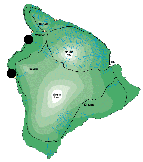 |
| This study is designed to assess the effectiveness of installing pin
moorings at Puako and near the Old Kona Airport to decrease the incidence of anchor damage
to coral reefs. Surveys will be conducted over a two year period at each site and coral
abundance will be compared below pin moorings and in areas at least 50 m distant from the
site to assess changes in coral abundance associated with mooring use. Status: ongoing
since 1996 |
| Principal investigator: Dr. Paul Jokiel,
UH Manoa Research associates: Dr. Evelyn Cox, Marian Westley and students from
Hawaii Preparatory academy
Sponsor: U.S. Fish and Wildlife Service |
 |
| Corals that are located in and near the Kawaihae small boat harbor are
being transplanted offshore prior to expansion of the harbor, which is scheduled to begin
in Feb. 1996. The goals of this project are to prevent damage to corals in the footprint
of the new jetties; to have seed colonies which can be transplanted back unto the new
jetties to accelerate coral establishment; and to gain knowledge on the effectiveness of
transplantation as a mechanism to restock coral depleted areas. See also link with Hawai'i Preparatory Academy students
Status: project finished 1995-97 |
| Principal investigator:
George Balaz, National Marine Fisher
Service and Dr.
Marc Rice, Hawai'i Preparatory
Academy Research
assistants: students from Hawai'i Preparatory
Academy
Sponsor:
Hawai'i Preparatory academy |
 |
| This
program is a cooperative study between
HPA and the National Marine Fisheries
Service, Honolulu laboratory. For more
information see the link at the Hawaii Preparatory Academy. Status:
ongoing since 1995 |
|
